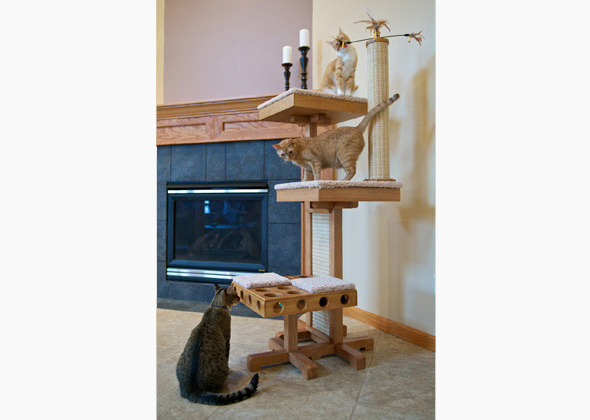7 Tips to Make Vet Visits Less Stressful for Cats
by Laura Cross
Published on August 19, 2016
Skip To

It doesn’t have to be that way, though — August 22 is National Bring Your Cat to the Vet Day, which is a perfect excuse to call up your veterinarian and schedule your cat’s annual exam. To help make the visit less stressful for your cat (and for you), we’ve gathered our top seven strategies for visiting the vet.
1. Teach Your Cat to Love Her Carrier
We know that just the mention of the cat carrier causes a lot of cat owners — and cats — to feel instantly stressed. There’s a good chance your cat has been pushed and prodded into this little box and then transported to an unfamiliar and scary destination, like the vet or groomer. No wonder she’s terrified! Instead of just using her carrier as a means of transport, start treating it as a kitty refuge. Put comfortable bedding inside and leave it in a place where she likes to hang out (in a sunny spot or in the room where you like to spend time), so she can rest and relax in it whenever she likes. After all, many cats already prefer sleeping in small spaces, so there’s a good chance she’ll enjoy resting in a carrier. And don’t miss Vetstreet trainer Mikkel Becker’s great tips on teaching your cat to love the carrier.2. Practice Going on Car Rides
Once your cat learns to love her crate, you can teach her to love the car. This should be a gradual process: Mikkel Becker recommends placing your crated cat in the car with the car door open, giving her a treat, then taking the carrier out of the car. Do this several times, and when your cat seems comfortable, you can close the car door and then open it again. Next, you can turn the car on then off. Eventually, you’ll work your way up to driving short distances, like around the block, and your cat will learn that the car isn’t so scary after all.3. Spray Pheromones
For many cats, synthetic pheromones are like a relaxing feline perfume. Spray them inside your kitty’s crate and spritz some on a towel to toss over the top (so she won’t see unfamiliar sights such as dogs in the waiting room or the inside of your car). Take some to the veterinary office with you to spray in the exam room (with your vet’s permission). Dr. Marty Becker says he sprays so much of the stuff, it’s like his aftershave. Synthetic pheromones won’t work on all cats, but it’s worth trying. You can find this product at many national and online pet retailers.4. Establish a Waiting Room Strategy
The waiting room can be a cat’s worst nightmare. It could be filled with strange dogs, cats and humans. Instead of waiting in the waiting room, ask the vet clinic staff if it is OK for you to wait in the car with your cat until the exam room is ready (as long as it’s not too hot or cold in your car). If that’s not an option, make sure you cover her carrier with a towel, so she can’t see the other pets in the waiting room.5. Train Her to Tolerate Being Handled
During an exam, your vet will check your cat from head to tail. Some cats may not appreciate having a stranger touch them. Ideally, you should teach your cat to tolerate being handled while she’s still a kitten, but she can still learn as an adult. Practice holding and picking her up the right way and ask friends to do the same. She’ll probably protest the most when you handle her paws. Build her tolerance to paw handling by holding each of her paws and gently pressing on each toe. And don’t forget to dole out plenty of treats and praise! This will be especially helpful when you need to trim her nails.6. Reward Good Behavior
Teaching your cat to love the vet clinic takes patience — and you can’t force the love. We know how frustrating transporting or handling a cat can be, but you shouldn’t take your frustration out on your cat. Punishment will only make her more scared and anxious. Focus on rewarding your cat when she does something good — no matter how small or insignificant it seems. Did she sniff her carrier? Give her a treat or praise her with affection (if those are things she likes). Did she make the trip in the car without hissing? That deserves a reward, too. The goal is to help your cat form a positive association with every step, from before and during veterinary visits to the trip home. It won’t happen overnight, but it’s not as difficult as you may think.7. Talk to Your Veterinarian
For some cats, no amount of treats and praise will make them change their tune when it comes to vet visits. If your cat is particularly anxious, your vet may recommend sedation or other calming strategies. In extreme cases, finding a veterinarian who makes house calls may help. But don’t let your cat’s anxiety stop you from scheduling regular veterinary exams — your cat’s health is too important to risk.More on Vetstreet:





